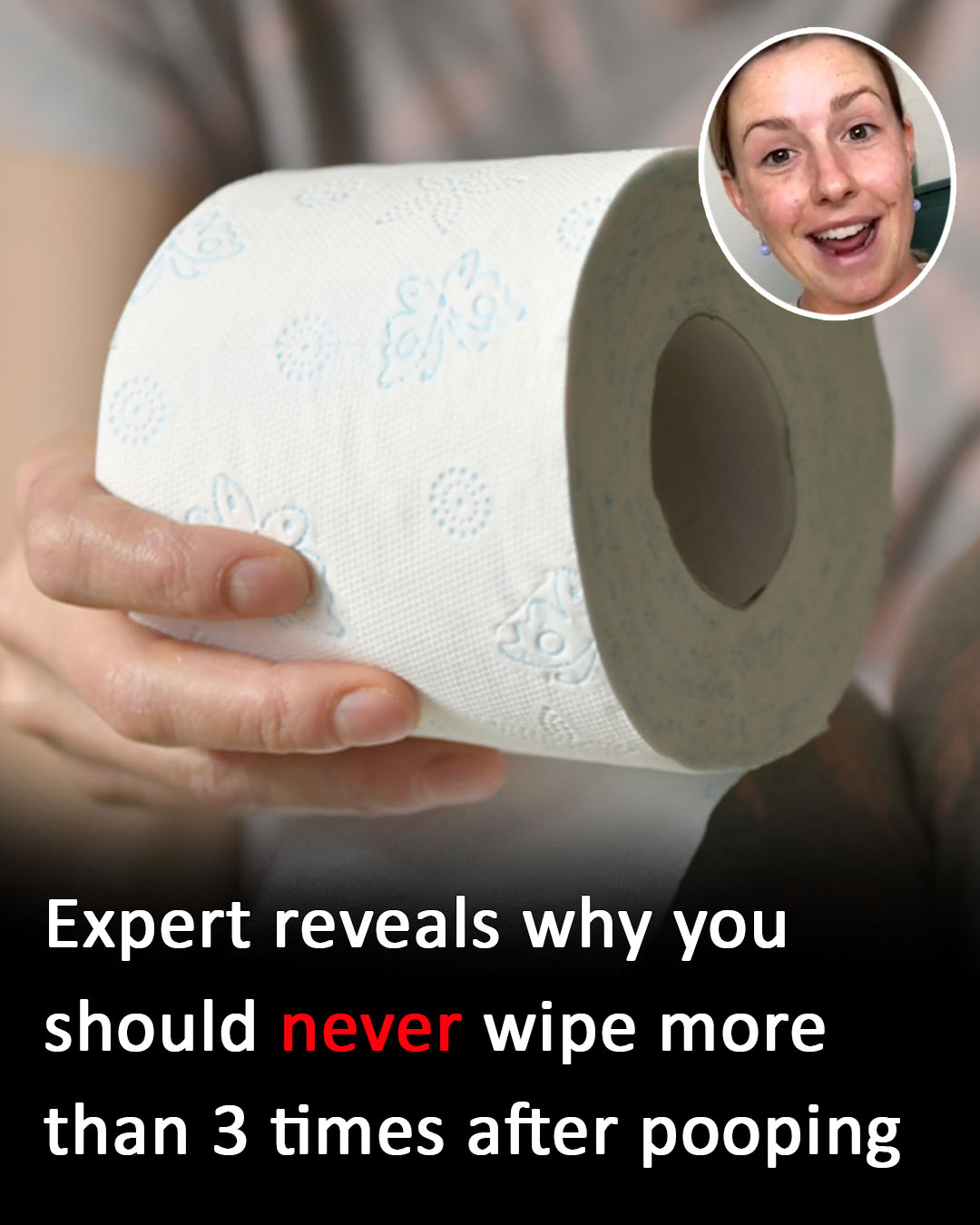Let’s be honest—this is something we’ve all dealt with. You head to the bathroom, do your thing, and then realize it’s taking a whole lot of toilet paper to get clean. One wipe turns into three, then five, and maybe even more. But according to a health expert, if you find yourself wiping more than three times, it might not just be an issue of bad luck—it could actually mean something’s off with how your body is functioning. A recent TikTok video that’s gone viral features Georgia Reupert-Allen, a pelvic floor physiotherapist with BIEN Australia, and her advice is both simple and surprising. She explains that this common issue has a name—“fecal smearing”—and it happens when some stool is still left near the anus even after you’ve finished your bowel movement. While it might feel like you just need to wipe more thoroughly, the real issue could lie deeper.

Reupert-Allen, who specializes in pelvic floor health, says fecal smearing occurs when the muscles around the anal opening aren’t doing their job as effectively as they should. If those muscles—particularly the external anal sphincter—are weak or not engaged properly during a bowel movement, stool can remain near the exit point. As a result, you’re left wiping over and over to get rid of residue that really shouldn’t be there in the first place. Fortunately, there’s a solution that doesn’t involve fancy bathroom gadgets or endless rolls of toilet paper. Reupert-Allen recommends a technique called “progressive pelvic floor muscle squeezing,” and while the name sounds technical, it’s actually very easy to practice.
Here’s how it works. Toward the end of your bowel movement, you perform a series of gentle pelvic floor contractions in a gradual pattern, kind of like a waterfall. Start by squeezing the muscles at 20% of your strength, then ramp it up to 50%, then 80%, and finally finish at 100%. This cycle should be done four times before you wipe. What this does is help fully close your anal sphincter and make sure all the stool is completely evacuated. By targeting potential weakness in the external sphincter, this technique can help you avoid the leftover mess that leads to all that excessive wiping. Not only does this save you toilet paper, but it also spares your skin from unnecessary irritation that can come from wiping too much.
But what if you’ve tried the technique and it still feels like you’re wiping endlessly? According to Reupert-Allen, other issues could be at play. Conditions like hemorrhoids or scar tissue can also interfere with how efficiently your body clears out waste, causing lingering stool even after a seemingly complete bowel movement. In cases like these, it’s worth bringing up your concerns with a healthcare provider to rule out anything more serious. As a general rule, healthy bowel habits include going number two anywhere from one to three times a day, or at least three times a week. If you’re experiencing changes in frequency, discomfort, or other symptoms alongside excessive wiping, it’s definitely time to talk to your doctor.
The TikTok video has sparked a ton of reactions, with people sharing their own bathroom stories, laughing at “hairy situations,” and realizing they’re not alone in their struggles. As funny as some of the comments may be, they also show just how common this problem is—and how few people know there’s actually a simple fix. So what’s the takeaway? If you find yourself wiping more than three times, don’t ignore it or assume it’s just part of life. It might be your body’s way of telling you that your pelvic floor muscles need some support. By practicing the progressive squeezing technique and reaching out to your doctor if problems persist, you can create a more efficient, comfortable, and hygienic bathroom routine. At the end of the day, going to the bathroom shouldn’t feel like a workout—and with the right approach, it doesn’t have to.





